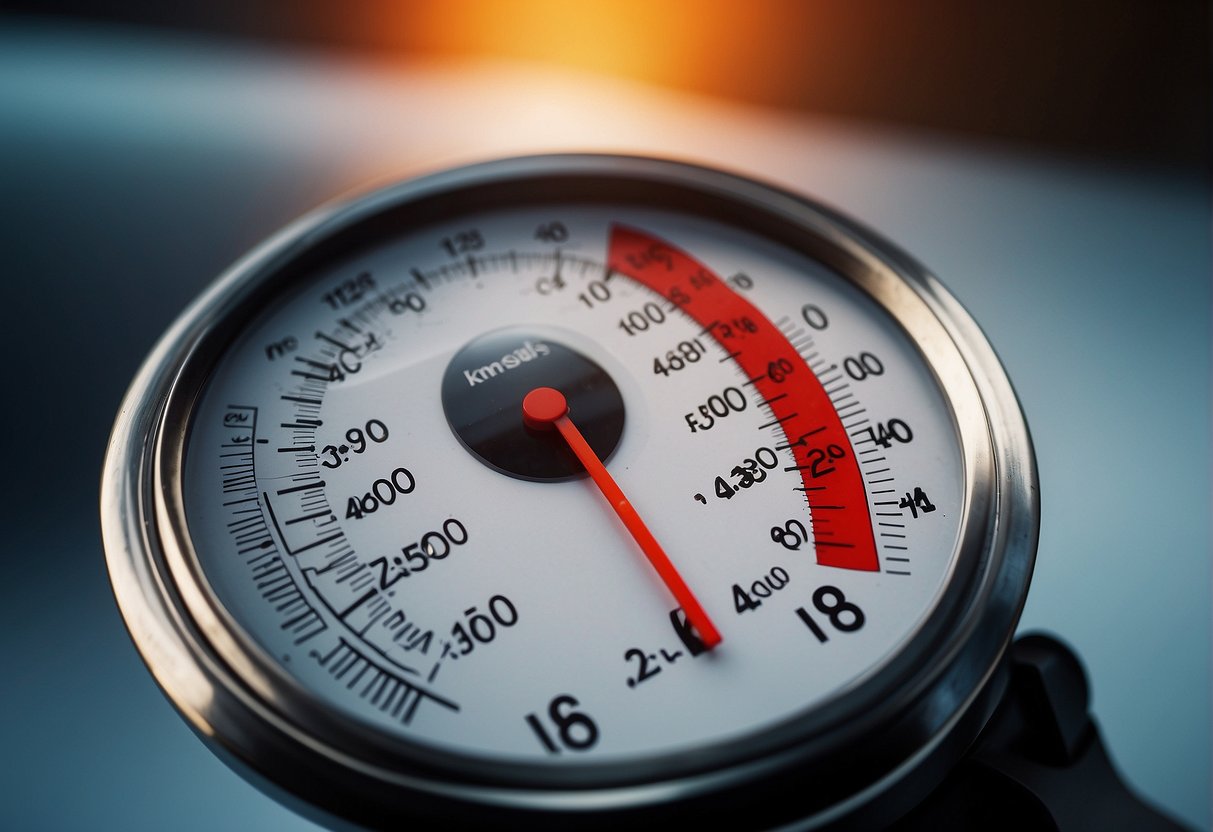📦 FREE Shipping
How Many Calories Does a Fever Burn 2024: Surprising Insights

When your body temperature rises, so does your metabolic rate. “How Many Calories Does a Fever Burn: Surprising Insights” explores the energy your body uses when fighting an infection.
How Many Calories Does a Fever Burn?
Physiology of Fever
Your body’s normal temperature hovers around 98.6 degrees Fahrenheit (37 degrees Celsius). When a virus or other infection invades you, your immune system raises your body temperature, inducing a fever.
This uptick is a defense mechanism—a hotter environment can be less hospitable to pathogens.
Did You Know?
- Fever Range: Usually, a fever is defined as a body temperature of 100.4 F (38 C) or higher.
- Immune Activation: A fever helps your immune system to function more efficiently in battling the infection.
Role of Metabolism in Fever
Your basal metabolic rate (BMR) is the energy your body needs at rest to maintain basic bodily functions. When you have a fever, your BMR increases.
Key Points:
- Energy Expenditure: For each degree rise in body temperature, the metabolic rate can increase by about 7% to 12.5%.
- Calorie Burn: This can lead to a substantial uptick in calorie burn, working to use energy reserves to support the immune response.
Factors Influencing Caloric Burn During Fever

Influence of Age and Weight
Your age and weight are crucial factors in determining the increase in your metabolic rate during a fever. Your metabolic rate is generally higher as a younger individual, which means you might burn more calories during a fever than an older adult.
- Children and young adults tend to have faster metabolisms, leading to higher caloric burn.
- Weight also plays a role—more body mass can increase caloric burn because your body needs more energy to maintain a higher temperature.
Impact of Diet and Hydration
What you eat and how well you stay hydrated significantly influence your metabolic rate during a fever.
- A healthy diet rich in protein can support your immune system and may thus affect your body’s energy requirement.
- Hydration is key. Water helps regulate your body temperature, and maintaining hydration can affect your fever’s impact on your caloric expenditure.
Exercise and Muscle Mass Considerations
Even though exercise might be the last thing on your mind while under the weather, your pre-fever physical activity levels and muscle mass can influence calorie burn during illness.
- Those with higher muscle mass from regular exercise have a higher basal metabolic rate. This means you naturally burn more calories at rest, fever or no fever.
- Maintaining a healthy diet and regular exercise in your routine builds muscle, potentially leading to a greater caloric expenditure during times when your body temperature is elevated.
Nutritional Management and Recovery

Optimizing Food Intake When Sick
Your appetite may dwindle when you’re sick, yet nutrient-rich foods can bolster your recovery. Chicken soup, an age-old remedy, does wonders with its hydrating and anti-inflammatory properties.
Incorporating fruits, nuts, and a splash of honey for antioxidants and energy is also smart. Focus on easy-to-digest, comforting foods:
- Fruits: Vitamin C-rich choices like oranges and lemons
- Carbs: Simple options like toast or rice to maintain energy levels
- Probiotics: Yogurt to support your gut health
Hydration and Its Role
Fever can lead to the shedding of water weight, making hydration paramount. An emphasis on drinking sufficient fluids is non-negotiable:
- Water: At least 8-10 glasses a day
- Broth: Adds nutrients and hydration
- Herbal teas: With a drizzle of honey and lemon to soothe your throat
Supplements and Natural Remedies
While food is your frontline defense, supplements are the reinforcements. Zinc and vitamin C are great allies, potentially reducing the duration of colds. Natural remedies to consider are:
- Vitamin C: Oranges, strawberries, and kiwi
- Zinc: Pumpkin seeds or supplementation if needed
Strike a balanced diet and utilize these supplements sensibly to combat your fever effectively.
FAQ:
Do you burn calories with a fever?
Yes, you burn more calories with a fever as your body’s metabolic rate increases to fight infection.
How many extra calories do you burn while sick?
While sick, you may burn extra calories, especially if you have a fever, but the exact number varies based on the illness’s severity.
Do you lose weight during fever?
You might lose weight during a fever due to increased metabolism and potential decreased appetite.
Do fevers increase metabolism?
Fevers can increase metabolism because the body uses more energy to maintain a higher temperature, leading to more calories burned.
If this article about the question: “How Many Calories Does a Fever Burn” helped you, don’t forget to leave us a comment down below about what you think of the article.


